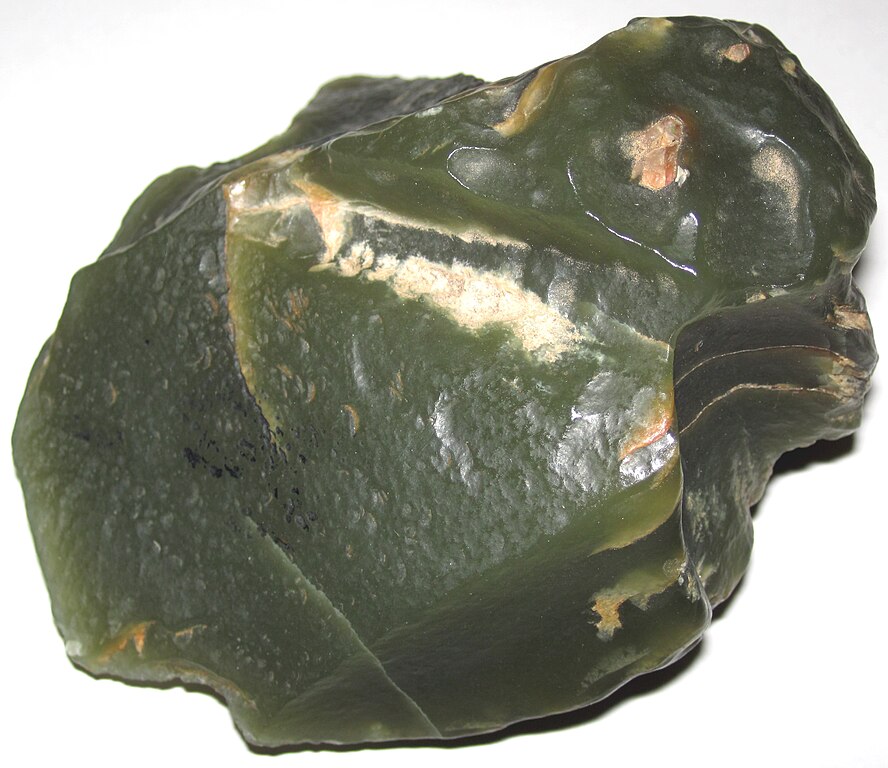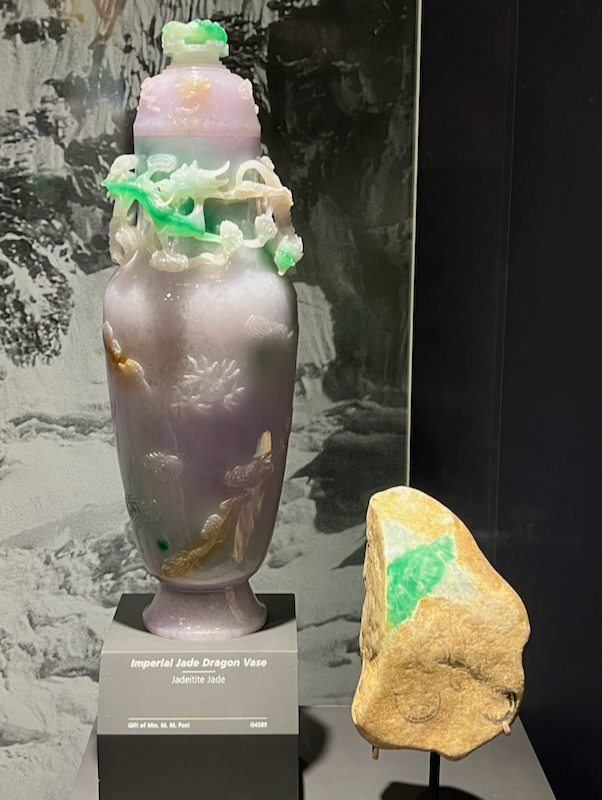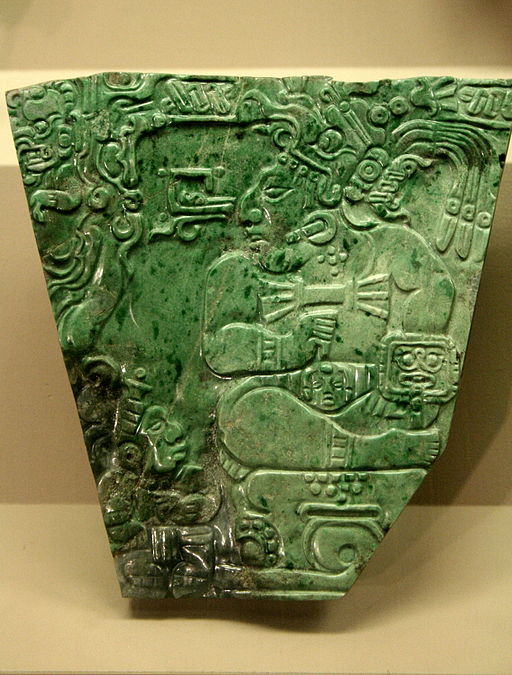Jade
In Asia, the highest quality jade is one of the most valuable minerals. Because you usually find it in large masses instead of small crystals, it can be used to create larger objects, like statues and detailed carvings, and when it’s used for jewelry, it can be the whole piece, instead of just a stone set in a metal frame. For example, you’ll often see whole bracelets that are carved out of a single piece of jade. Jade is pretty unique because it can actually be two different minerals and still be called jade—either jadeite or nephrite—and they have a lot in common. Both of them are formed where metamorphic rocks are forming, both are silicates, both are very hard, and both are made green when they have enough iron in them. Their main difference is that jadeite has sodium (Na) in it and nephrite has calcium (Ca). Oh, and it turns out that nephrite itself can be made of two minerals—actinolite and tremolite—that are very similar but have different amounts of magnesium or iron. The fact that you can make bracelets out of it and they don’t break easily shows how tough jade is. What makes jade so strong? For both jadeite and nephrite, they’re made of tiny crystals that interlock together as they form. Under a microscope, jadeite’s crystals are similar to the crystals in other cryptocrystalline minerals, such as chalcedony, whereas nephrite’s crystals are fibers that form a matrix. That matrix makes nephrite (specific gravity 2.95) lighter than jadeite (specific gravity 3.24 or more). Aside from green, jade can also be white, purple, or other colors, depending on tiny amounts of other minerals that are in it.
| Formula | Group or Type | Shape | Hardness | Specific Gravity | Streak | Luster |
|---|---|---|---|---|---|---|
| Ca2(Mg,Fe)5Si8O22(OH)2 or NaAlSi2O6 or Na(Al,Fe3+)Si2O6 | Amphibole or Pyroxene | Monoclinic | 6–7 | 2.9–3.7 | White | Vitreous to dull |


